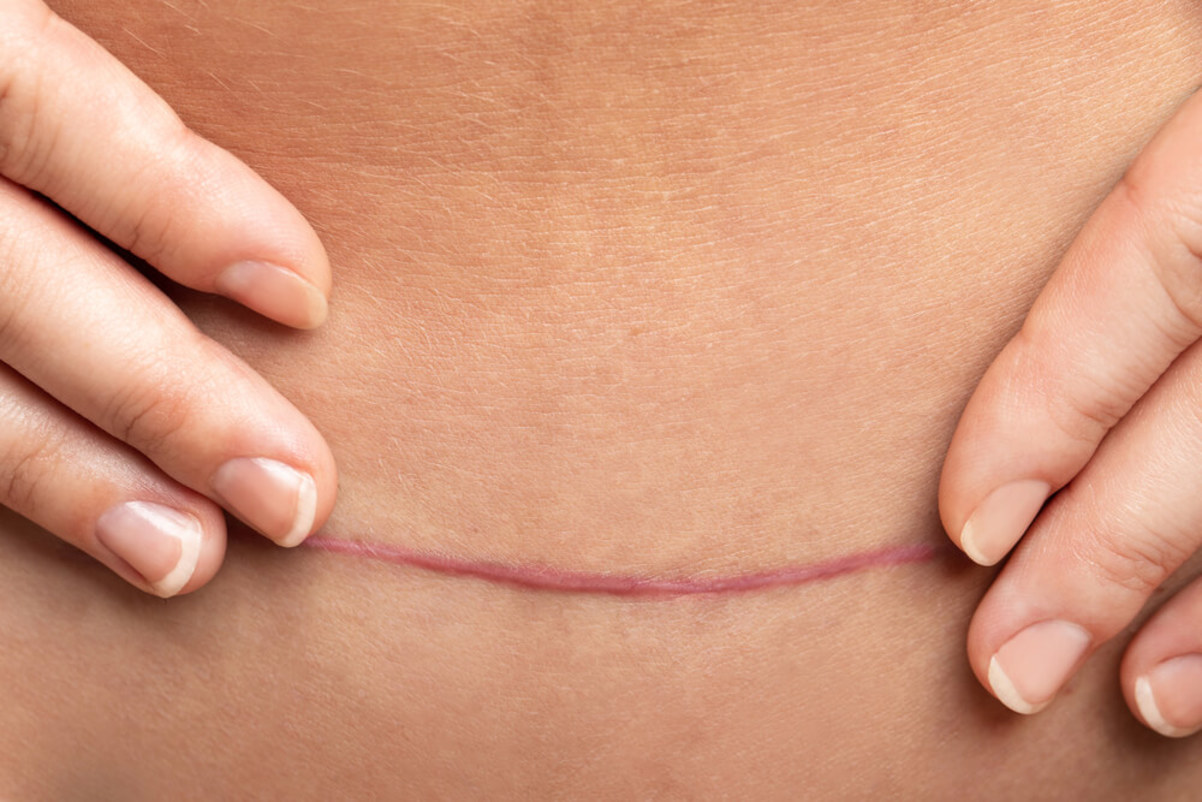Back
Recovering From a C-Section with Pelvic Floor Therapy
By Dr. Christine Martirez PT, DPT on 10/25/2024

Recovering from a cesarean section (C-section) involves more than just physical healing at the incision site; it also impacts your core muscles, pelvic floor, and overall mobility. Many people are surprised to learn that even though a C-section doesn’t involve a vaginal delivery, it can still impact the pelvic floor and lead to related dysfunctions. Pelvic floor therapy can be incredibly beneficial during your recovery, helping to alleviate symptoms, improve strength, and restore function.
Anatomy of a C-Section and Its Impact on the Pelvic Floor
A C-section involves an incision through multiple layers, including the skin, abdominal muscles, and uterus, to deliver the baby. Although this procedure bypasses the vaginal canal, the surrounding muscles, nerves, and connective tissues are still affected, which can impact the pelvic floor.
During a C-section, the surgeon makes an incision just above the pubic hairline, typically across the lower abdomen. This incision goes through layers of fascia, muscle, and the uterus, creating a direct impact on core stability and potentially affecting how the pelvic floor functions. The post-surgical healing process can also lead to scar tissue formation, which may limit mobility in the pelvic area and create tension that affects the pelvic floor muscles.
Common Pelvic Floor Dysfunction Symptoms After a C-Section
Many people associate pelvic floor issues with vaginal birth, but after a C-section, it’s not uncommon to experience various pelvic floor dysfunction symptoms. Here are some of the common issues that may arise:
Urinary Incontinence
: The pelvic floor muscles play a major role in maintaining continence. Disruption of abdominal muscles, scar tissue, and weakness in the core can all lead to urinary leakage.Pelvic Pain
: Scar tissue and adhesions from the C-section incision can create restrictions in the surrounding tissue, leading to pain in the lower abdomen, hips, or pelvic region.Pelvic Organ Prolapse
: Although less common following a C-section, it is possible to experience pelvic organ prolapse due to weakened pelvic floor muscles that no longer offer proper support to the bladder, uterus, or rectum.Urinary Frequency/Urgency
: Tightness, scar tissue, or tension in the pelvic area can lead to sensations of increased urinary urgency or frequency.Core Weakness and Poor Posture
: The abdominal incision affects core muscles, particularly the rectus abdominis and transverse abdominis, which play a role in stabilizing the spine and pelvis. When these muscles are weakened, it can lead to posture issues, lower back pain, and poor overall stability.
How Pelvic Floor Therapy Can Help You Recover from a C-Section
Pelvic floor physical therapy offers personalized, hands-on care to address these symptoms and restore function after a C-section. Here’s how it can help:
1.
Scar Tissue Management
Pelvic floor therapists use manual therapy techniques, including gentle myofascial release and scar tissue mobilization, to improve mobility around the incision. These techniques help reduce adhesions and tightness, improving range of motion and reducing discomfort or pain associated with scar tissue.
2.
Strengthening Core and Pelvic Floor Muscles
After a C-section, it’s essential to retrain and strengthen the abdominal muscles, particularly the deep core muscle, the transverse abdominis. Your pelvic floor therapist will guide you through gentle core-strengthening exercises that support the abdominals and pelvic floor without straining the incision. This approach can help reduce incontinence, improve stability, and alleviate lower back pain by restoring strength and balance.
3.
Breathing Techniques and Pressure Management
Proper breathing techniques can help improve core stability and reduce excessive pressure on the pelvic floor. Pelvic floor therapists teach techniques like diaphragmatic breathing and pelvic floor relaxation exercises that support healing and reduce tension in the pelvic muscles. This is especially useful for those experiencing pelvic pain or tension around the incision site.
4.
Addressing Pelvic Floor Tightness and Coordination
Scar tissue, tension, or improper healing can lead to tightness in the pelvic floor, even without a vaginal delivery. Pelvic floor therapists use manual therapy and neuromuscular re-education to improve muscle coordination, helping the pelvic floor relax or contract effectively as needed. This can reduce symptoms like urinary urgency and frequency.
5.
Education on Body Mechanics and Posture
Your therapist will assess your posture and daily movement patterns, offering guidance on body mechanics to reduce strain on the core and pelvic floor. They may also provide exercises and stretches to improve posture, which can relieve lower back pain and improve stability as your body adjusts post-surgery.
Key Benefits of Pelvic Floor Physical Therapy After a C-Section
Faster recovery
by addressing core and pelvic floor strength.
Reduction of scar tissue restrictions
through targeted manual therapy techniques.
Improvement in urinary control
, reducing incontinence and urgency symptoms.
Relief from pelvic pain
through relaxation and mobility techniques.
Preparation for future pregnancies
by strengthening the pelvic floor and core.
While a C-section is a common and often necessary delivery method, it has unique impacts on the body that benefit from targeted rehabilitation. Pelvic floor therapy can offer critical support by addressing scar tissue, improving muscle coordination, and restoring pelvic health. Whether you’re managing symptoms like incontinence, pelvic pain, or core weakness, a pelvic floor therapist can develop a personalized recovery plan to help you feel stronger and more comfortable postpartum.
Looking for guidance in your recovery following your c-section? Reach out to us at Pelvic Health Center in Madison, NJ to set up an evaluation and treatment! Feel free to call us at 908-443-9880 or email us at receptionmadison@pelvichealthnj.com.
Read More:
How Chronic Pelvic Congestion in Men Contributes to Prostatitis By Shannon Strauch, PTA, STMT-1 on 12/11/2024 How lymphatic issues can cause symptoms of prostatitis Prostatitis and Tight Pelvic Floor Muscles: A Comprehensive Guide By Shannon Strauch, PTA, STMT-1 on 12/10/2024 How a tight pelvic floor can be the reason for prostatitis symptoms
Are you ready to live pain free?
Request An Appointment